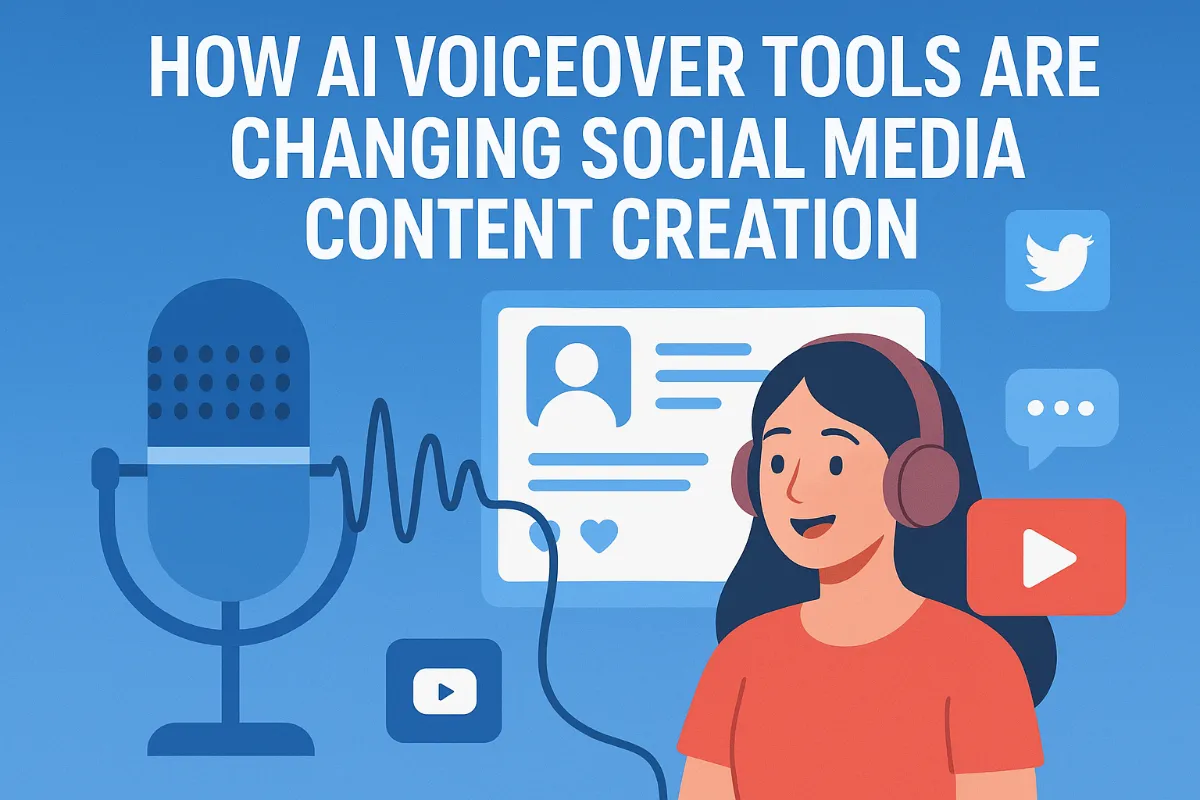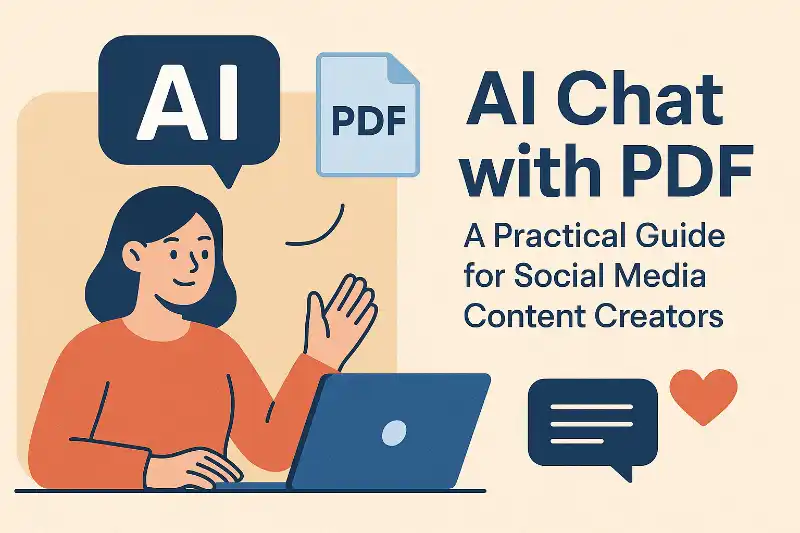Synthetic Media in Social Marketing: A Content Creator's Guide
Understanding Synthetic Media: What Is It and Why Should You Care?
Did you know that ai can now generate entire social media campaigns? It's true, and this technology is rapidly changing how content creators work.
Synthetic media is content either partially or fully created by artificial intelligence. This includes ai-generated images, videos, audio, and text. You're likely encountering this type of media every day on social media platforms. Littlefield Agency notes that social media platforms are increasingly requiring labels and disclosures for ai-generated content. (Labeling AI-Generated Content May Not Change Its ...)
Ai tools are becoming more accessible and higher in quality. This means marketers can now create content more cheaply and efficiently. Talking Influence observes that it's becoming difficult for consumers to differentiate between human and computer-generated content. (AI vs. Human-Generated Content: A Data-Driven Look at ...)
Social media platforms are also stepping in, requiring labels and disclosures for ai-generated content to increase transparency.
One of the biggest advantages of synthetic media is the increased volume and speed of content output. Ai can generate text within seconds, identify patterns, and overcome creative blocks. Additionally, it offers the ability to personalize content at scale, making it more algorithmically engaging.
Synthetic media also provides a cost-effective solution for content production. Instead of spending hours editing and drawing, ai can generate digital artwork in seconds.
As content creators, understanding these tools is crucial for staying competitive.
Leveraging Synthetic Media: Practical Applications
Did you know ai can now create visuals good enough to fool even marketing experts? Synthetic media offers diverse practical applications that are reshaping social media marketing.
Ai excels at generating unique images and videos. These visuals are useful for creating engaging social media content. Ai tools now produce high-quality art and stock footage quickly and cheaply.
- Unique Visuals: Ai algorithms generate visuals tailored to specific campaigns, offering a fresh alternative to traditional stock photos. For example, a healthcare provider might use ai to create images of diverse patients, promoting inclusivity.
- Cost-Effective Tools: Tools like DALL-E and Midjourney let marketers create stunning visuals from text prompts. This reduces the need for expensive photoshoots or graphic design services.
- Brand Examples: Brands are starting to use ai-generated visuals to enhance their social media presence. This helps them stand out in crowded feeds with unique and algorithmically engaging content, as Talking Influence notes.
Virtual influencers are computer-generated characters. They are gaining popularity in social media marketing.
- Rise of Virtual Influencers: These ai-powered personalities, like Lil Miquela, attract millions of followers. They offer brands a consistent and controlled way to connect with audiences.
- Benefits: Virtual influencers provide 24/7 availability, consistent messaging, and risk-free brand representation. This gives brands complete control over their image.
- Successful Campaigns: Samsung partnered with Lil Miquela to show that "the future is now," illustrating the potential of ai in marketing, as Talking Influence mentions.
Ai can now clone voices for narrations and audio content. This has significant implications for content creation.
- Ai Voice Cloning: Voice cloning maintains a talent's unique sound. It enables quick adjustments, streamlining audio production.
- Benefits: This technology offers faster production times. It also provides voice talent with an additional income stream, as Littlefield Agency points out.
- Use Cases: Industries like audiobooks and podcasts are adopting voice cloning. This makes content creation more efficient and sustainable.
As you can see, synthetic media offers powerful tools. Now, let's dive into how ai can create personalized content at scale, making it more relevant to individual users.
Personalizing Content at Scale with AI
Imagine a world where every piece of content you see online feels like it was made just for you. Ai is making this a reality, allowing marketers to connect with audiences on a much deeper level.
Ai algorithms can analyze vast amounts of user data – think browsing history, past purchases, and engagement patterns – to understand individual preferences. This allows for the creation of highly tailored content that resonates more effectively.
- Dynamic Content Generation: Ai can dynamically adjust text, images, and even video elements within a piece of content based on the viewer's profile. For instance, an e-commerce ad might show a product in a color the user has previously shown interest in.
- Personalized Recommendations: Ai-powered recommendation engines, like those used by Netflix or Amazon, can be applied to social media content. This means users see posts and updates that align with their specific interests, increasing engagement.
- Behavioral Targeting: Ai can predict user behavior and deliver content at the most opportune moments. For example, a user who frequently engages with fitness content might receive a motivational post just before their usual workout time.
This level of personalization goes beyond simple demographic targeting. It’s about understanding the nuances of individual user behavior and preferences to deliver truly relevant experiences.
Content Automation with Social9
Imagine spending less time creating content and more time engaging with your audience. Social9 offers synthetic media tools that can automate many content creation tasks.
Social9 leverages ai to generate engaging content for social media platforms.
- Content Creation: You can create posts, captions, and hashtags using ai-powered tools, saving time and effort.
- Engagement: The ai algorithms help you write content designed to drive higher engagement rates. They do this by analyzing successful content patterns, identifying trending topics, and understanding what kind of language and calls to action tend to get more likes, shares, and comments.
- Automation: Social9 automates content creation, allowing you to focus on other critical aspects of your social media strategy.
For instance, a retail business can use Social9 to automatically generate posts showcasing new products and promotions. This ensures a consistent flow of fresh content, keeping their audience engaged.
Optimizing your content for visibility is essential. Social9 provides smart captions and hashtag suggestions to help.
- Smart Captions: Use Social9's ai to enhance your posts with compelling and relevant captions. These captions are often generated by ai that has been trained on millions of successful social media posts, learning what makes a caption engaging and shareable.
- Hashtag Suggestions: Get suggestions for relevant hashtags that increase the visibility of your content. The ai analyzes your post's content and suggests hashtags that are both popular and niche, helping you reach a wider, yet targeted, audience.
- Optimization: Optimize your content to achieve maximum reach and impact on social media platforms. This means the ai helps you craft content that is more likely to be seen by the right people.
A healthcare provider might use this feature to create informative posts about health tips, accompanied by relevant hashtags to reach a broader audience.
Content templates and reliable support can streamline your workflow.
- Content Templates: Social9 offers pre-designed content templates suitable for various social media platforms.
- 24/7 Support: Access round-the-clock support for any assistance you may need, ensuring a smooth content creation process.
- Streamlined Process: These comprehensive tools help you streamline your content creation process, making it more efficient.
For example, a finance company could use pre-designed templates to quickly create informative posts about investment strategies, ensuring brand consistency and saving time.
Social9’s tools can help you create content faster.
The Dark Side of Synthetic Media: Ethics and Risks
Is synthetic media too good to be true? While it offers exciting possibilities, it also comes with a dark side that content creators must understand. Let's explore the ethical considerations and potential risks.
One of the most significant dangers of synthetic media is its potential for creating deepfakes. These ai-generated videos and audio clips can convincingly mimic real people saying or doing things they never did. This can easily lead to the spread of misinformation.
- Damaging Reputations: Deepfakes can damage reputations by portraying individuals in a false or negative light. For instance, a political campaign could use deepfakes to discredit an opponent.
- Misinformation: Synthetic media can be used to create fake news stories that deceive the public. Talking Influence notes that deepfake technology has been used to create videos of celebrities, fooling millions of viewers.
- Controversies: A notable example is the Tom Cruise deepfakes on TikTok, which blurred the line between reality and ai-generated content.
Transparency is crucial when using synthetic media. Marketers have a responsibility to avoid deceptive practices and respect consumer rights.
- Transparency and Disclosure: Always disclose when content is ai-generated. This builds trust with your audience. As Littlefield Agency notes, social media platforms are increasingly requiring labels for ai-generated content.
- Avoiding Deceptive Practices: Do not use synthetic media to mislead consumers or create false endorsements. For example, avoid creating fake reviews or testimonials.
- Prioritizing Mental Health: Be mindful of the impact of synthetic media on mental health. Avoid promoting unrealistic beauty standards or body images.
Using real human faces without consent can lead to legal trouble. As content creators, you must understand the legal landscape surrounding synthetic media.
- Consent is Key: Never use someone's likeness without their explicit permission. This includes using their voice, image, or any other identifiable feature.
- FTC Regulation: The Federal Trade Commission (FTC) plays a role in regulating synthetic media. They are concerned with deceptive advertising and endorsements. For example, if an ai-generated testimonial is used, it must be clearly disclosed as such to avoid misleading consumers.
- Data Privacy Laws: Be aware of data privacy laws like GDPR and CCPA. These laws protect individuals' personal data and require you to obtain consent before using it. For instance, if you use personal data to train an ai model that generates content, you need to ensure you have the proper consent from the individuals whose data you're using.
Navigating the ethical and legal minefield of synthetic media requires careful consideration.
Maintaining Authenticity and Transparency
Can you imagine a world where every piece of content you see online is verified as authentic? Synthetic media is rapidly changing the digital landscape, but maintaining trust requires transparency. Let's explore how content creators can ensure their audience knows what's real and what's ai-generated.
Clearly stating when content contains deepfake technology or features a virtual influencer is crucial. This builds trust with your audience and avoids potential deception.
- Providing disclaimers ensures consumers understand the content is synthetic. For instance, adding a simple label like "AI-generated content" can make a significant difference.
- Honesty and transparency build trust with your audience. Talking Influence notes that providing a disclaimer clearly stating that a post contains deepfake technology or a virtual influencer can make all the difference to consumers.
- Consulting with focus groups can also help ensure consumers understand the content is synthetic media.
Using technology to verify content can help maintain authenticity. Digital watermarks, blockchain, and ai detection tools are all potential solutions.
- Digital watermarking can identify synthetic content. Invisible markers are embedded to trace the content's origin.
- Blockchain tracking can be implemented for content creation and modifications. This provides an immutable record of changes.
- Ai detection tools can identify manipulated media. These tools are becoming increasingly sophisticated, helping to spot deepfakes and other synthetic content.
Establishing industry-wide standards and ethical guidelines is essential for responsible synthetic media use. Self-regulation, ethics guidelines, and metadata protocols can all play a role.
- Self-regulatory standards help maintain authenticity and trust. These standards set expectations for disclosure and responsible use.
- Ethics guidelines for synthetic media marketing should include mandatory disclosure and respect for intellectual property.
- The Content Authenticity Initiative (CAI) is establishing metadata protocols. These protocols help verify the source and history of digital content.
As synthetic media continues to evolve, these measures will help ensure transparency and trust.
Future Trends in Synthetic Media Marketing
The future of social media marketing is not about replacing human creativity, but augmenting it with ai. Are you ready to meet your new ai-powered marketing team?
Ai is set to revolutionize personalized content creation. Imagine a world where every ad, every post, and every message feels like it was crafted just for you.
- Ai agents will act as marketing's new middleman. Instead of generic content blasts, ai will tailor each message to match individual preferences and behaviors. For example, an ai agent could monitor customer service inquiries and automatically generate personalized follow-up emails or social media responses.
- These agents analyze vast amounts of data to understand what resonates with each user. This ensures that content is not only relevant but also engaging.
- Think ai-generated video messages that address customers by name, referencing their past purchases or interests. This creates a personal connection that generic ads simply cannot match.

Synthetic media is key to creating immersive experiences in the metaverse. As virtual worlds become more sophisticated, the line between the physical and digital blurs further.
- Virtual avatars and digital twins will represent brands in these spaces. These ai-powered figures can interact with customers, host events, and showcase products in engaging ways.
- This opens opportunities for interactive experiences with virtual representatives. Customers can ask questions, receive personalized recommendations, and even try out products in a virtual environment.
- For example, a clothing retailer might offer virtual try-ons, or a travel agency might provide immersive tours of potential destinations.
Want to know what your customers really think? Ai can help.
- Ai-generated customer personas will emulate human behavior. These personas help marketers understand customer preferences and predict their actions. For instance, a marketer could use an ai-generated persona to simulate how a new product launch might be received by a specific demographic, allowing for strategy adjustments before going live.
- This technology has applications in value proposition design, segmentation, and marketing testing. By simulating customer responses, brands can refine their strategies before launching campaigns.
- The benefits include faster insights at a lower cost. Instead of conducting extensive surveys or focus groups, marketers can use synthetic customers to quickly gather data and test hypotheses.
The integration of these trends promises a future where marketing is more efficient, personalized, and engaging.
Best Practices for Content Creators: A Checklist
As you navigate the world of synthetic media, remember that with great power comes great responsibility. Here's a checklist to guide content creators in using these tools ethically and effectively.
- Prioritize Ethics Over Creativity: Always consider the impact of your content on your audience and the broader community. Avoid perpetuating harmful stereotypes or unrealistic beauty standards. Ensure diverse representation in your synthetic media strategies, reflecting the world as it is, not as you wish it to be. Be mindful of the potential for misinformation and manipulation.
- Be Transparent: Clearly disclose when content is ai-generated or features virtual influencers and deepfakes. Don't try to pass them off as real people. Honesty builds trust with your audience. Implement clear disclosure practices, such as adding labels or disclaimers indicating when content is created or altered by ai.
- Stay Informed: The field of synthetic media is constantly evolving, so staying informed about regulatory changes and industry best practices is crucial. Find a balance between innovation and responsible content creation. Continuously evaluate the impact of synthetic media on your audience, monitoring feedback and adjusting your strategies accordingly. Consider how your content affects mental health, cultural representation, and overall trust in media.
By following this checklist, content creators can harness the power of synthetic media while upholding ethical standards and maintaining audience trust. The future of content creation is here, and it’s up to us to shape it responsibly.





